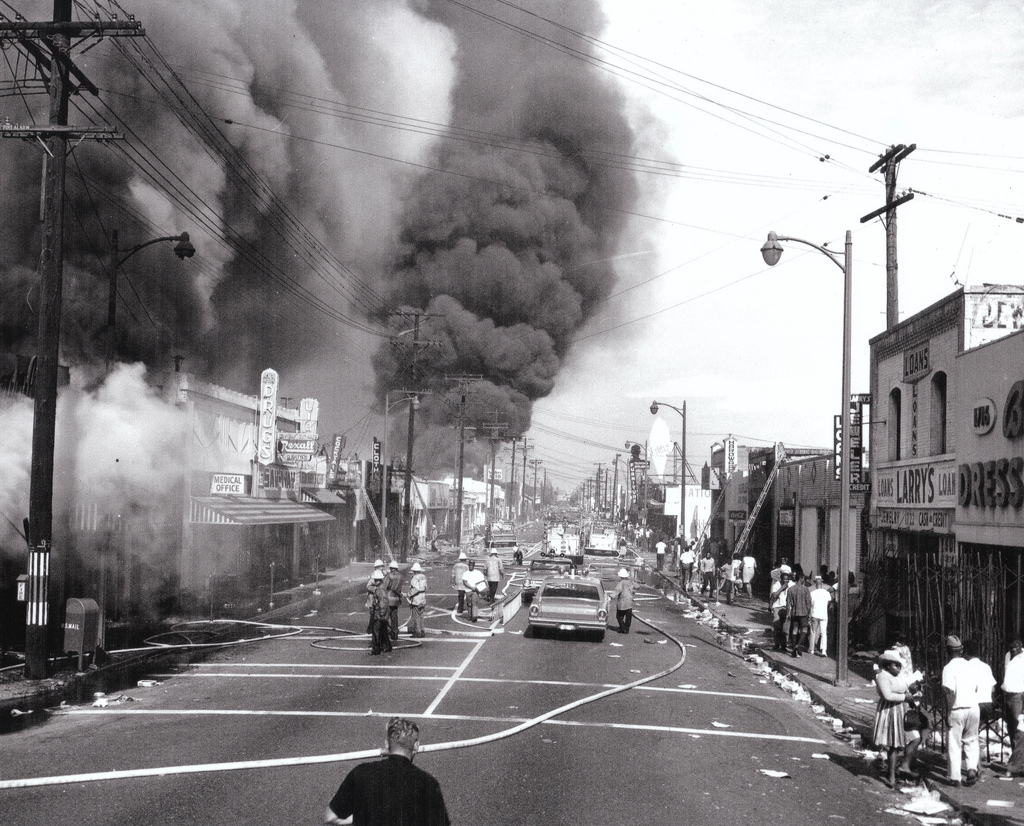

The committee held the land in trust from 1959-1975, when it donated the property to the City of Los Angeles, which, in turn, transferred responsibility for maintenance to the State of CA in 1978.

29.) Articles published in the Los Angeles Times during the course of 1959 indicated a rising level of awareness and appreciation for Rodia's work. The Committee effectively publicized the towers' plight, so much so that an article of, referred to ".the bizarre Watts Towers which have become world-famed as a work of unschooled art." (See "Bizarre Watts Towers to be Opened to the Public," Los Angeles Times,, p.

King and Cartwright donated the land to the newly-formed Committee for Simon Rodia's Towers in Watts. By the late decade, two young men-actor Nicholas King (1933-2012) and film editor William Cartwright-pooled $3,000 (with a $20 deposit) to buy the property from Montoya to preserve the artwork. B4.) Gradually, a preservation effort coalesced. The primary reason that they should not be destroyed is because it would be destroying the life's work of a true American artist." (See Ernest Leogrande, "Tower Lover," Los Angeles Times,, p. To destroy them would be to destroy a great potential tourist attraction. Writer and journalist Ernest Leogrande, a New York resident, wrote in a Los Angeles Times editorial of : "I'd like to know if anyone in Los Angeles agrees with me here in New York that these towers should be preserved. The threat of demolition aroused some consternation in the city and elsewhere. By the mid-1950s, the Los Angeles City Department of Building and Safety sought to condemn the towers, saying that they were a safety hazard. He worked gradually on his project until 1954, when he gave his land to a neighbor, Luis Sauceda Sauceda sold the property to another man, Joseph Montoya, a dairy worker, who hoped to use the towers as a setting for a taco shop he hoped to open, but never did.

Neighbors thought Rodia mad, and most did not appreciate the effort. Soon after moving in, he began work on this remarkable complex of ironwork structures. He married in Seattle, WA, by 1912, and had saved enough money by 1921 to purchase a triangular parcel on land in the Watts Neighborhood of Los Angeles, CA, what he called "Nuestro Pueblo." At this time, Los Angeles had one of the highest rates of single-family home ownership in the US. 1885, settling first in PA, and drifting West from there. Italian-American Sabato "Simon" Rodia migrated to the US c. However, guided tours around the perimeter are still available from Thursday through Sunday (see its official website for details).Watts Tower Art Center 1727 E.
#WATTS LOS ANGELES UPDATE#
Update February 2018: The Watts Towers are currently closed due to restoration and conservation efforts. Neighborhood children (including jazz bassist Charles Mingus) brought pieces of broken glass and pottery to Rodia in hopes they would be added to the project, but the majority of Rodia’s material consisted of damaged pieces from the Malibu Pottery, where he worked for many years. Rodia called the towers Nuestro Pueblo, meaning “our town.” Rodia built them with no special equipment or (so far as is known) predetermined design, working alone with hand tools and window-washer’s equipment. The work is decorated with found objects: bed frames, bottles, ceramic tiles, scrap metal and sea shells all protrude from the towers. The main supports are embedded with pieces of porcelain, tile, and glass. The sculptures’ armatures are constructed from steel pipes and rods, wrapped with wire mesh, and coated with mortar. The Towers are located near (and visible from) the 103rd Street-Kenneth Hahn Station of the Metro Rail LACMTA Blue Line. The work is a superb example of non-traditional vernacular architecture. The Towers were built by Italian immigrant construction worker Sabato (“Sam” or “Simon”) Rodia in his spare time over a period of 33 years, from 1921 to 1954. The Watts Towers in the Watts district of Los Angeles, California, are a collection of 17 interconnected structures, two of which reach heights of over 99 feet (30 m).


 0 kommentar(er)
0 kommentar(er)
